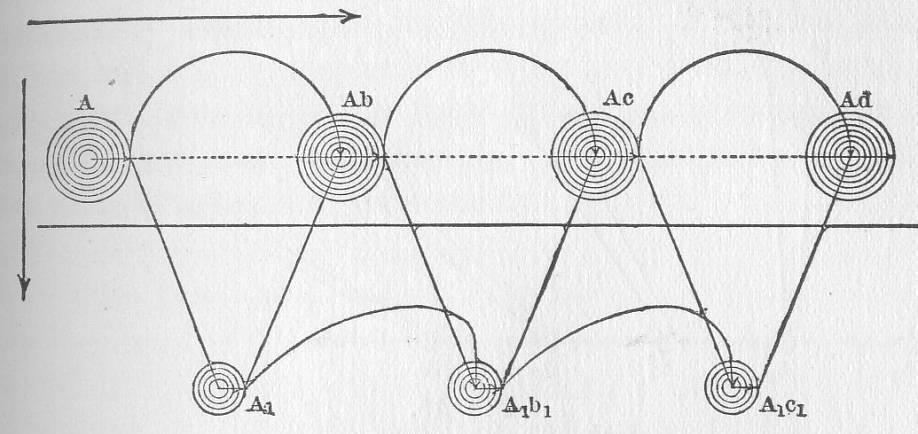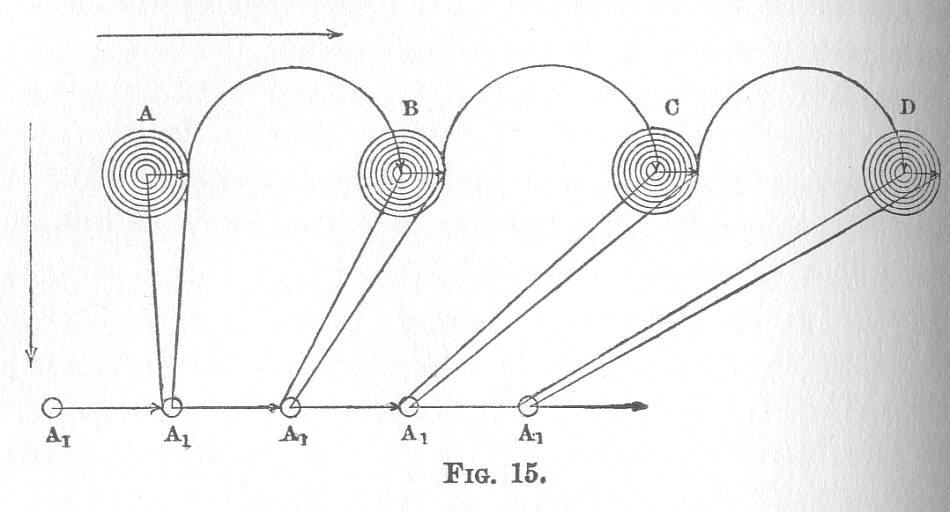| Boris
Sidis Archives Menu
Table
of Contents Next Chapter
CHAPTER IX NEURON ORGANIZATION AND MULTIPLE PERSONALITY THE investigations of Golgi, Cajal, and others point to the fact that the nerve-cell, especially that of the cortex of the higher forms of life, is an independent unit. The neurons form combinations of greater and greater complexity; the groups form systems, communities, constellations. These organizations of neurons are not of an anatomical, structural character, but of a purely functional relationship. The functional interrelation of neurons into more and more complex organization is concomitant with the functional interrelation of elementary psychic units and systems. The functional interrelation of primary and secondary sensory elements as well as representative elements and systems runs parallel to the functional interrelation of neuron elements and systems. The individual mind may be regarded from this point of view as a complex system of many minds or, more strictly speaking, the psychophysiological individual may be viewed as an organization of many subordinate individuals. As pointed out in a former work of mine:1 “Every nerve-cell anatomically considered is a complete unit. The processes coming out from different nerve-cells do not fuse with processes coming out from other nerve-cells, but rather interlace and come in contact like the electrodes of a battery in forming the electric circuit. . . . The associations of nerve-cells is not organic, but functional. “Nerve-cells with concomitant psychic moment-content come in contact with other nerve-cells, accompanied by psychic content, by means of their fine terminal processes. The association of cells forms a group whose physiological function has a concomitant mental activity. . . . By means of association fibres the groups are organized into systems, the systems into communities, the communities into clusters, the clusters into constellations, and each of the higher more complex aggregates is more feebly organized by less stable association fibres.” Now, if the constitution of the individual mind be made up of many subordinate individual minds, or of individuals less complex in character, we may well conceive the formation of secondary individualities or of secondary personalities in the various states of mental dissociation and degeneration. Under the influence of hurtful stimuli, be they toxic or traumatic in their nature, the first stages of functional degeneration may give rise to functional dissociations along different lines. Different individualities, often parasitic in character, may arise, develop and even stifle the primary personality. There may be as many different personalities, parasitic or secondary, as there are possible combinations and disaggregations of psychophysiological aggregates. There may, therefore, be different forms of secondary consciousness or of multiple personality. They may be of a simultaneous character or one of alternation. The personalities may appear side by side, or they may appear alternately. The play of personalities may be of a dramatic character, the characters and personalities appearing on the scene of consciousness like so many actors, the whole appearing as a play of many different persons. Such cases, however, occur after long training of the subconsciously formed personalities, so that they form and unform, appear and disappear from the scene of action, as if they were actual and not at all parasitic, foam-like constituted individualities. When such dramatic personalities reach a high stage of development and come and go on the stage like actors impersonating various characters, according to the needs or inspiration of the moment, then with the great power of imitation and play they give themselves names, and for the sake of dramatic play and sensation claim to be fully fledged persons simulating the living that have gone from this world. In the act of simulation they convey in their own fashion the fact that they are not living personalities, but still claiming existence, they place their being in another world, in the world of discarnate spirits. The truth of the being of the simulated quasi-personality is asserted in its own peculiar fashion. In its own way this transient trance personality reveals its real character, and it is all the more satisfied as the assertion is made in a dramatic, sensational form. The usual forms of multiple personality are those of alternation. Even in the simultaneous forms the order is really one of rapid alternation. The dramatic play of the personalities, in fact, requires such an alternation. The persons, fictitious or simulated ones, come and go, reproducing relations of persons in real life. The simultaneous presence of many personalities brings with it confusion, so that no more than two personalities enter into the simultaneous intercourse. The simplest way is to follow up cases in which this dramatic play has not reached such a high state of development. There is an interval between the appearing personalities. Each one carries along with it its own mental continuity. Each individuality, like a person in real life, has its own character, its own memory. The mental systems are independent in their function, their memories do not fuse, nor do they run into one another. Like actual persons in real life, persons whom they imitate and simulate, they stand out independent. The personalities do not interpenetrate. There is an impassable gap between them. When one appears the other is absent, and often the life and memories of one are not known to the other. One personality may often enter into communication with the other. This is somewhat similar to what we find in real life, when different people try to get information of the life of their neighbors. It may, therefore, happen that some personalities may have information about their fellow personalities, while the latter are ignorant of the life of the former; in fact, they may not even know of their existence. But even in those cases where there is knowledge of the life of the fellow personality, the knowledge is not a direct one; it is entirely of an indirect character, as it is in the case of living persons; one does not live directly the life of the other. They know of the life experience of the other personalities by information. In reality, between the life of one and that of the other there is a clear gap.
Let the concentric circles of A (Fig. 14) represent the widening successive beats of consciousness of each simulating personality, and let A1 represent that of another; then from A to A1, there is a gap. This gap may be one of deep unconsciousness or of a third state of consciousness with a vague relation or with no relation at all to either A or A1. We may represent the periodical manifestations of the quasi-personality by a series of circles. Between each manifestation and the other there is a gap. Let A represent one period of functioning activity and A1 the next one, then between the two there is a gap,—a complete break. With the disappearance of A1, the first one, A, but with some modification, comes to the surface; we may term it Ab. The beginning of Ab connects itself with the end of A. This is indicated by the arrow. With the cessation of Ab, A1, with some modification, say b1, appears, the system being A1b1; this latter connects itself not with Ab, but with A1. We, therefore, may have a series of A, Ab, Ac, Ad, Ae, etc., with gaps, in the interstices of which there are other active states of another personality, consisting of a series, A1, A1b1, A1c1, A1d1, A1e1, etc. The former are synthetized into one personality, having its own life history, character, and memory, and so are also the latter. In such a case we have the phenomena of double personality. A third, fourth, fifth, and more series may be interposed, and we may then have the phenomena of triple, quadruple, quintuple,—in short, the phenomena of multiple personality. It may again be that a dissociated system falls into the subconscious, and keeps on repeating itself in the form of independent states, but vaguely connected with the principal personality. This system may keep repeating itself, but may not reach the full stage of personality; it may be too elementary in its psychic content and type. Here, too, the lapse may be complete, and the manifested dissociated mental system appears in the gaps formed by the lapses of the principal personality. Here, again, the successive series of the principal personality present one continuity, while the successive series of the dissociated elementary system, Al, are so many repetitions of the same state.
Let A (Fig. 15) represent the main personality of the patient, B the next emergence after the break. From A to B there is a break in which the dissociated system, A1 occupies the whole field of consciousness. Now the start of the nucleus of B is the last act of A. The same holds true in the case of B and C, C and D, and so on. As soon as the personality enters into its life activity it begins where it has left off, no matter how wide and deep the lapse or gap may have been. A fully developed personal system must have a continuous history. For continuity is one of the main attributes of personality.
|

